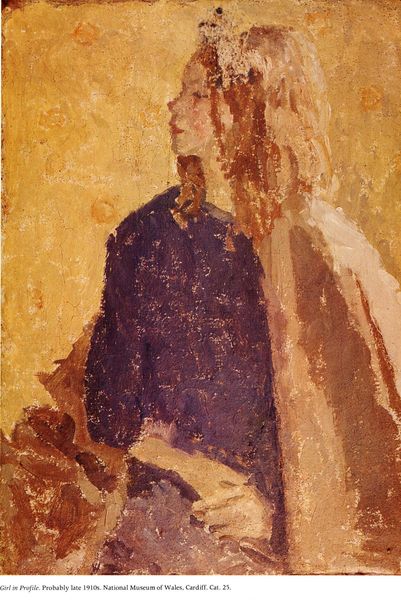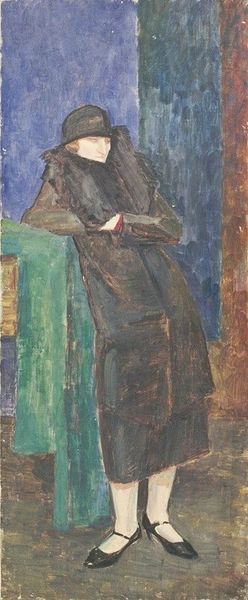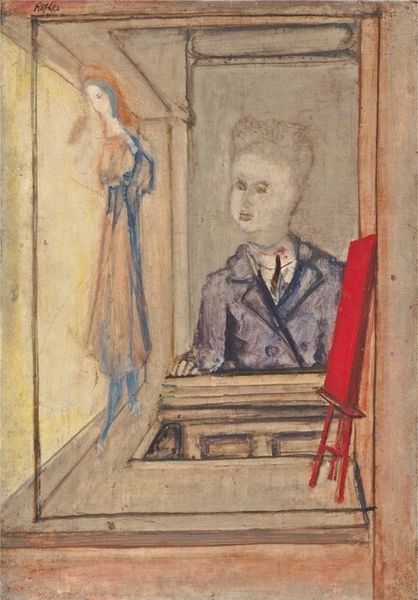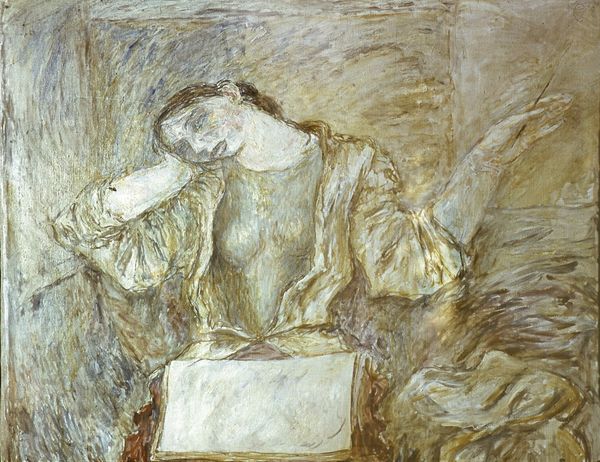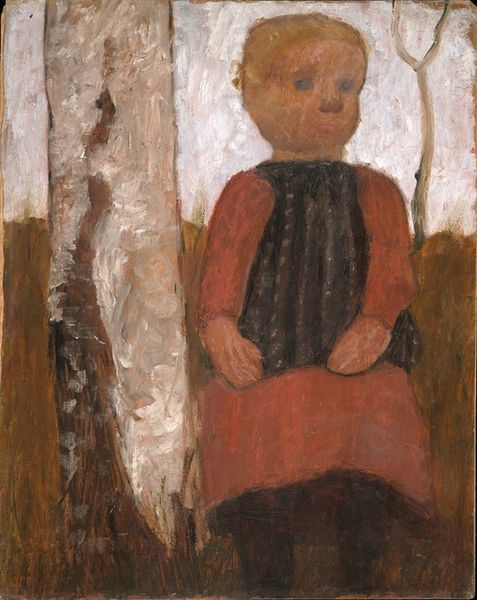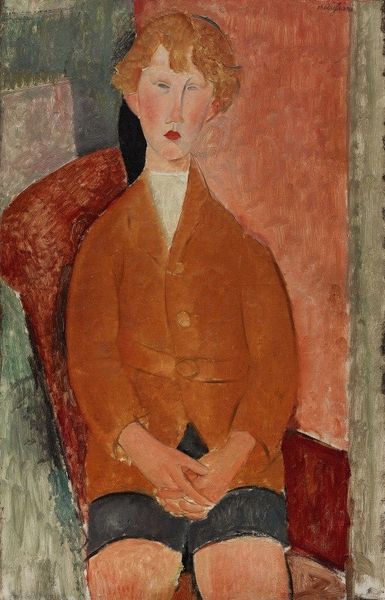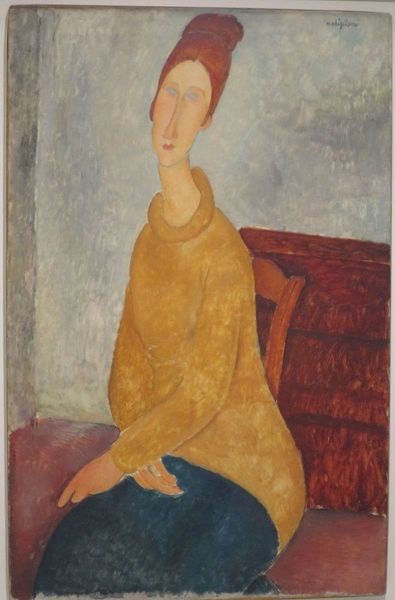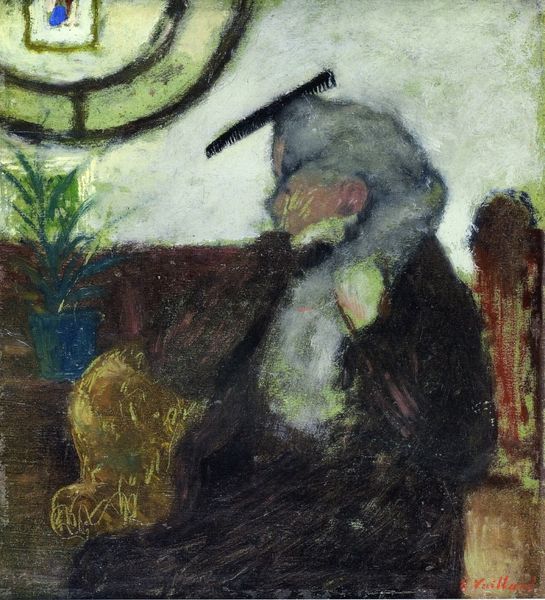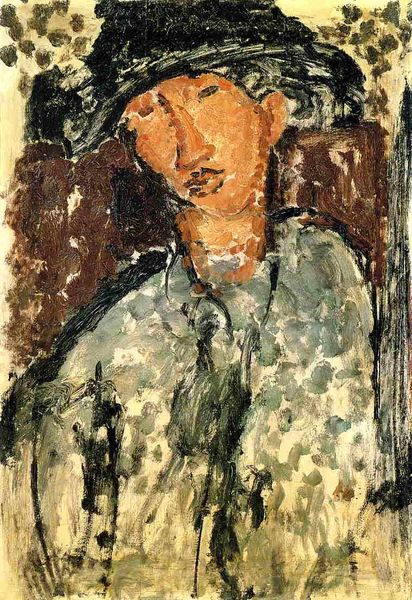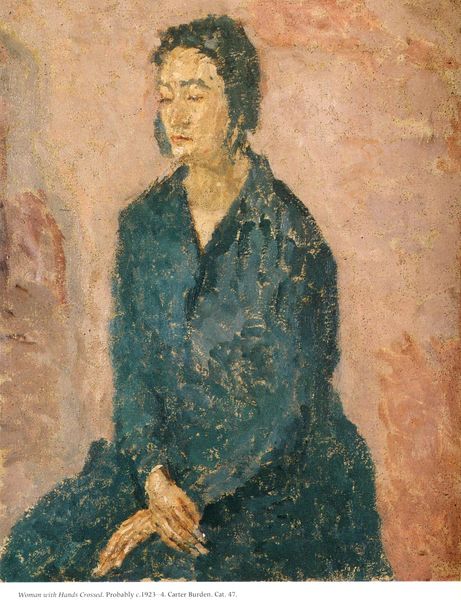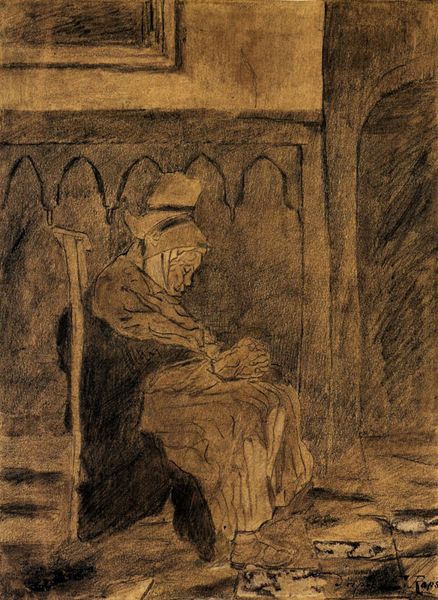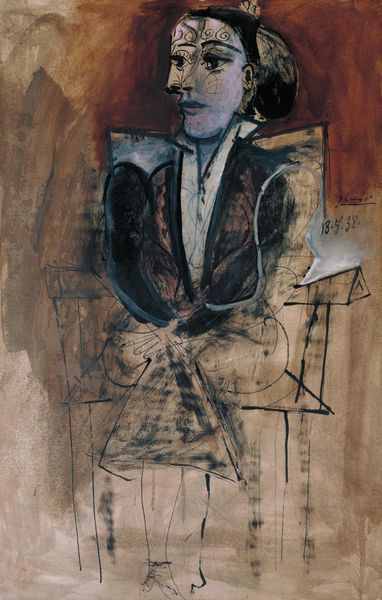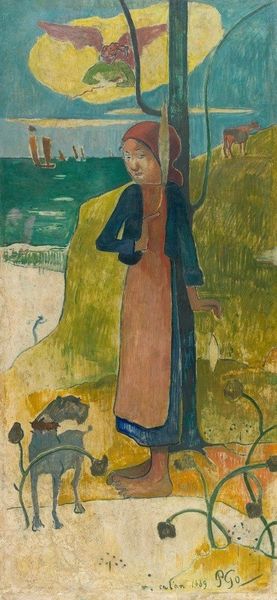
painting, oil-paint
#
portrait
#
gouache
#
cubism
#
painting
#
oil-paint
#
figuration
#
genre-painting
Dimensions: 100 x 70 cm
Copyright: Public domain US
Curator: Here we see Picasso's "Hurdy-Gurdy," a genre painting from 1905 executed in oil paint, a compelling example of his early Cubist explorations. Editor: It strikes me immediately with a melancholy feeling, a quiet stillness. The muted colours contribute, but there's also something about the posture of the figures – a weary dignity perhaps? Curator: It’s crucial to consider this painting in the context of early 20th-century debates surrounding art and social realism. Picasso, at this time, was engaging with themes of poverty and the marginalized, a narrative underscored by the itinerant musician. Editor: The Hurdy-Gurdy itself becomes a symbol of both livelihood and confinement, its rectangular shape echoing the box-like compositions we often see. And consider the Harlequin figure, a visual trope signifying disguise, performance, but also inherent sadness. There’s a sense of societal observation through these archetypes. Curator: Precisely. We must consider how the Harlequin's traditional attire becomes a marker of societal otherness. Furthermore, the ambiguous background suggests the lack of a stable place in the world, perhaps commenting on the socioeconomic conditions shaping lives in Paris. Editor: I’m intrigued by how Picasso uses colour here. The palette seems deliberately restricted, dominated by earthy tones and desaturated hues, save for the brighter diamond patterns on the child. The red hat, the muted colours – there’s a hidden code here. Curator: Red as a symbol of the revolutionary impulse, muted to hint at the dashed hopes of the working class? The deliberate flattening of perspective, the simplification of forms, also challenge traditional modes of representation that privilege the bourgeoisie. Editor: Ultimately, the symbolism connects to our experience of loss and hope – and what’s carried within memory, especially those collective memories shaping art history. The imagery offers both connection and emotional distance simultaneously. Curator: Thinking of "Hurdy-Gurdy" through a socio-political lens, it's hard to not view these figures as the embodiments of the forgotten—their humanity deliberately brought into focus by Picasso's specific style during this early phase. Editor: Indeed. The visual weight of those silent figures allows a subtle invitation to consider deeper, even timeless themes, beyond its initial impact.
Comments
No comments
Be the first to comment and join the conversation on the ultimate creative platform.
